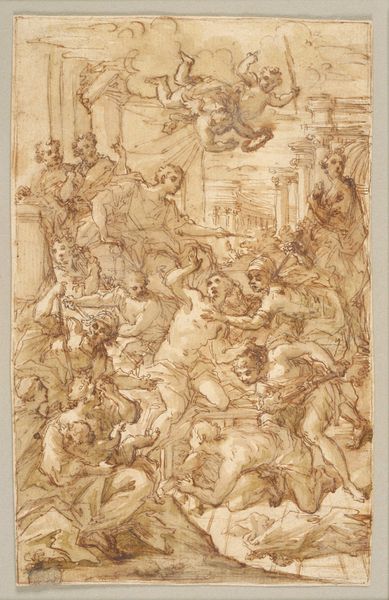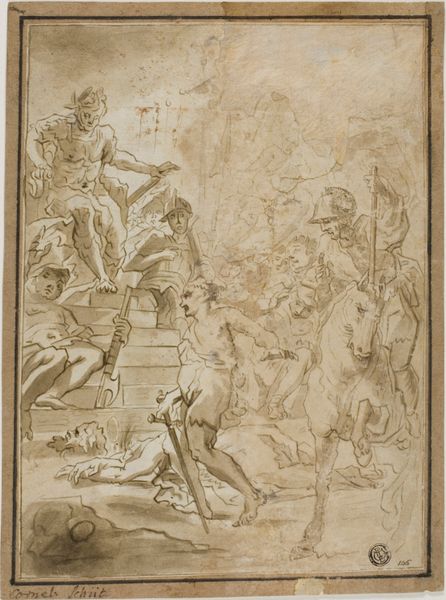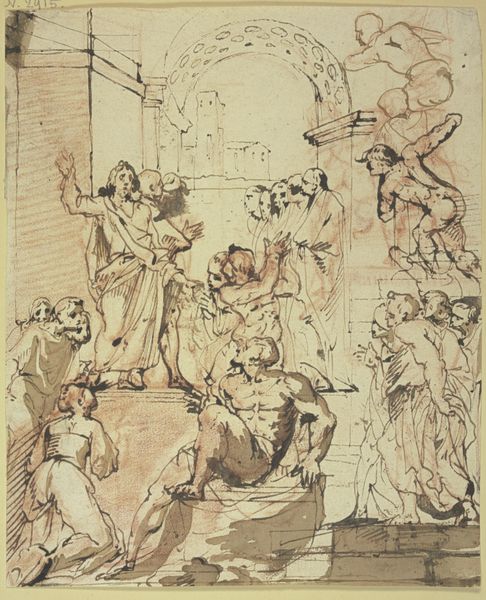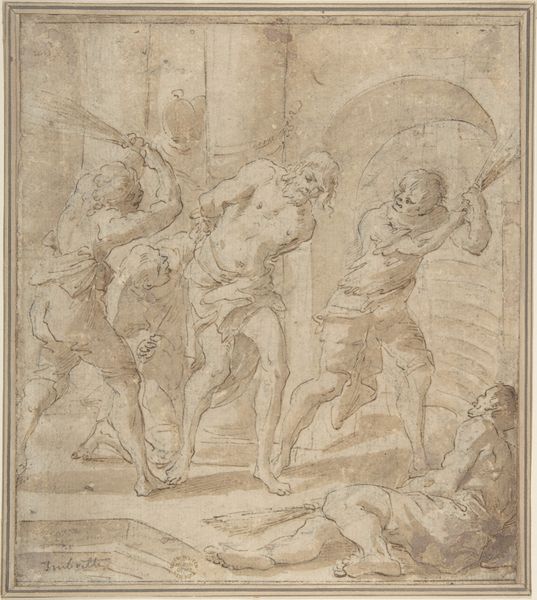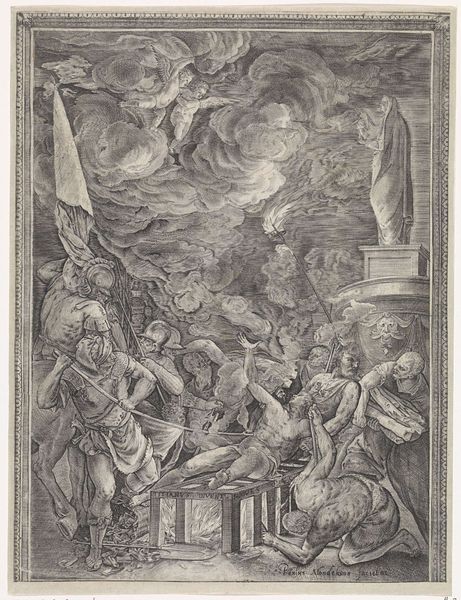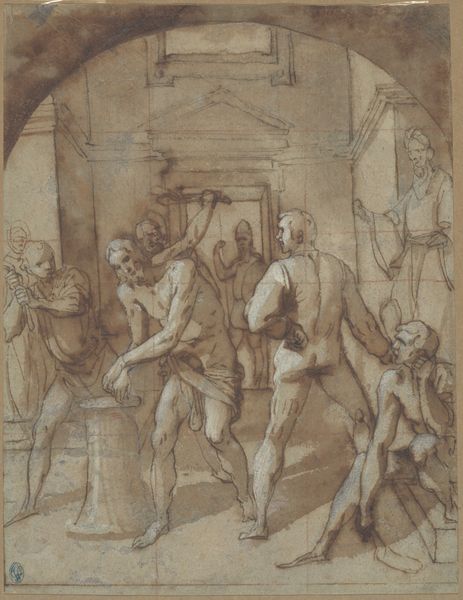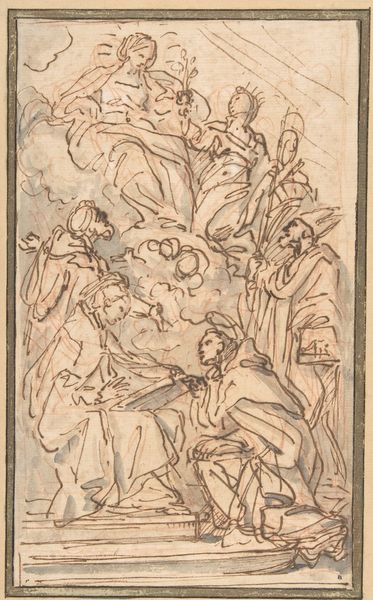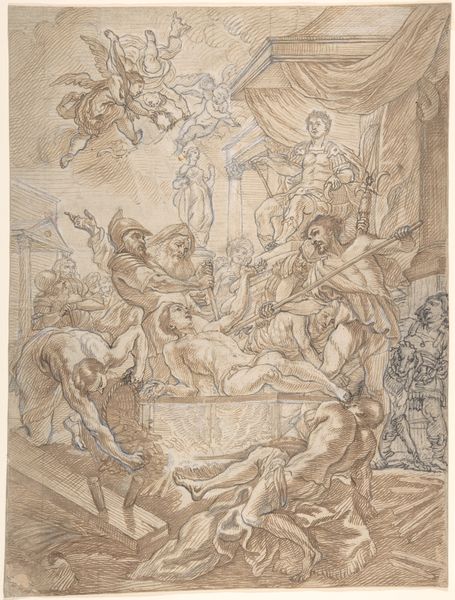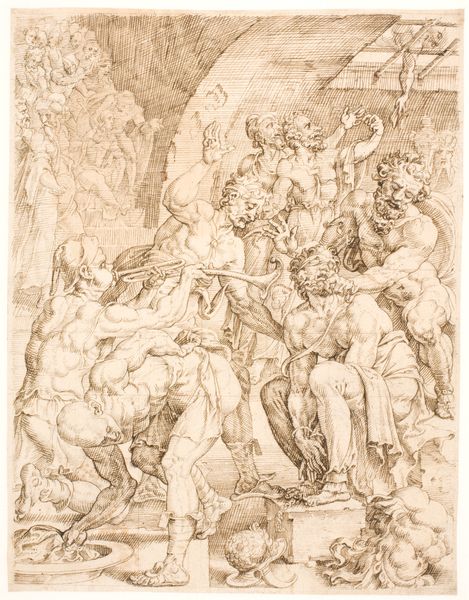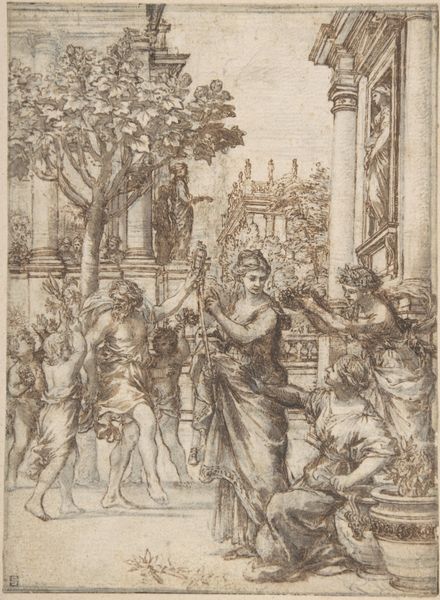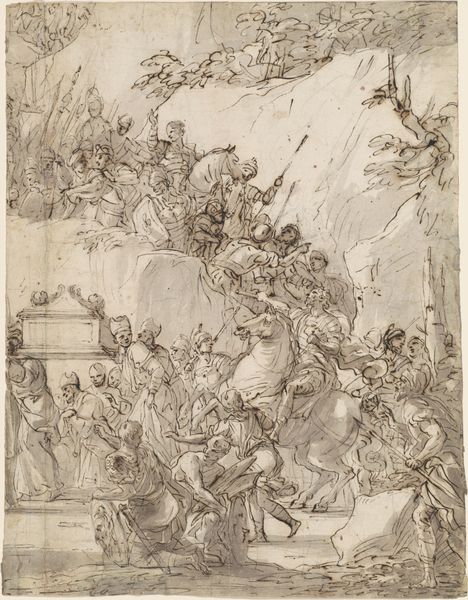
Apparition of Christ (recto); Printed Fragment with Jupiter Enthroned with Eagle, from Caraglio's Martyrdom of Saint Peter and Saint Paul (verso) 1524 - 1527
0:00
0:00
drawing, print
#
portrait
#
drawing
# print
#
mannerism
#
figuration
#
history-painting
#
italian-renaissance
#
christ
Dimensions: 5 11/16 x 4 15/16in. (14.5 x 12.6cm)
Copyright: Public Domain
Curator: Welcome. We are looking at "Apparition of Christ" by Parmigianino, likely created between 1524 and 1527. What strikes you first? Editor: The energy, undeniably. A raw, frenetic quality in the marks. It's quite gestural, as if capturing a fleeting moment of intense action. Curator: Indeed. The artist was a key figure in Mannerism, and here you see that interest in dynamic compositions, figures in exaggerated poses, all designed to heighten drama and emotional impact, which aligns with the socio-political unrest of the Italian Renaissance period. Editor: And all executed on paper with pen and brown ink! I’m thinking about the accessibility of that medium. This wasn't some grand commission carved in marble. It's immediate, and that quick execution seems intrinsic to the subject. Curator: Absolutely, this would likely be a preparatory drawing; it shows how artists would develop and plan out the compositions. I am curious how he engages the viewers. How does his art affect society? Does the content itself deliver an empowering message for the current society? Editor: I see your point. The figure of Christ feels separate from the human crowd – look at how Parmigianino positions the Messiah towering atop the crowd, creating a sense of removal but also dominance, contrasting the divine with our mortal coil, the artist has truly demonstrated his ability to merge philosophy with visual form. I am also impressed by the economical use of materials to achieve so much expression. Curator: And yet, it is important to remember these drawings were made with specific intentions—meant to realize artworks accessible to those elite patrons commissioning religious works that validated their beliefs, or who may not have the intellectual and religious foundation of the topic itself. Editor: That makes me ponder about who gets access to this kind of powerful image today. Now on display in the Metropolitan Museum of Art, New York, how is the meaning further shifted by this context? Curator: Indeed, museums play a key role in mediating our relationship with art. This piece reminds me of the artist’s vision within historical and social constructs. Editor: And I'm left appreciating how Parmigianino combined humble materials with remarkable skill to convey such potent dynamism and feeling.
Comments
No comments
Be the first to comment and join the conversation on the ultimate creative platform.

